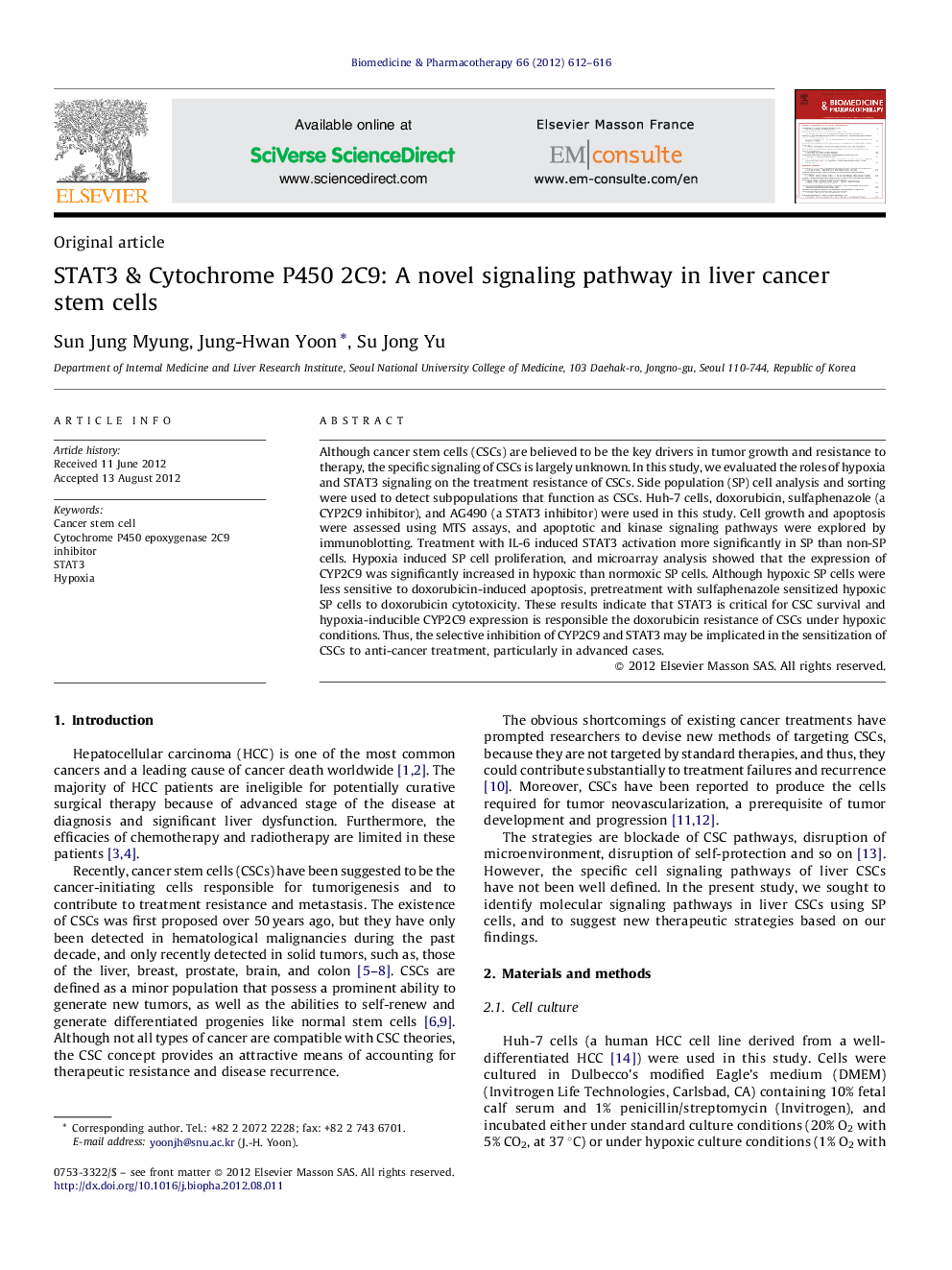| Article ID | Journal | Published Year | Pages | File Type |
|---|---|---|---|---|
| 2524306 | Biomedicine & Pharmacotherapy | 2012 | 5 Pages |
Although cancer stem cells (CSCs) are believed to be the key drivers in tumor growth and resistance to therapy, the specific signaling of CSCs is largely unknown. In this study, we evaluated the roles of hypoxia and STAT3 signaling on the treatment resistance of CSCs. Side population (SP) cell analysis and sorting were used to detect subpopulations that function as CSCs. Huh-7 cells, doxorubicin, sulfaphenazole (a CYP2C9 inhibitor), and AG490 (a STAT3 inhibitor) were used in this study. Cell growth and apoptosis were assessed using MTS assays, and apoptotic and kinase signaling pathways were explored by immunoblotting. Treatment with IL-6 induced STAT3 activation more significantly in SP than non-SP cells. Hypoxia induced SP cell proliferation, and microarray analysis showed that the expression of CYP2C9 was significantly increased in hypoxic than normoxic SP cells. Although hypoxic SP cells were less sensitive to doxorubicin-induced apoptosis, pretreatment with sulfaphenazole sensitized hypoxic SP cells to doxorubicin cytotoxicity. These results indicate that STAT3 is critical for CSC survival and hypoxia-inducible CYP2C9 expression is responsible the doxorubicin resistance of CSCs under hypoxic conditions. Thus, the selective inhibition of CYP2C9 and STAT3 may be implicated in the sensitization of CSCs to anti-cancer treatment, particularly in advanced cases.
